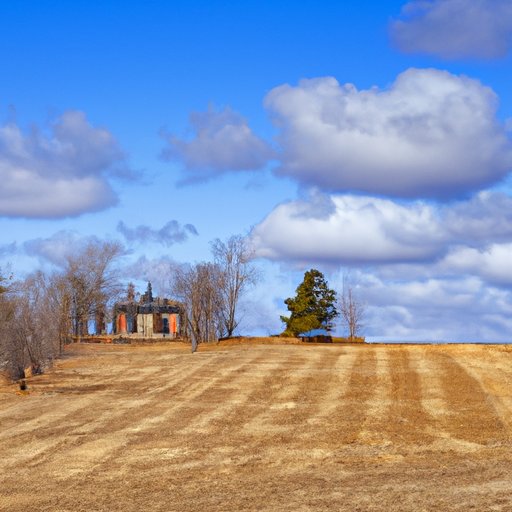Understanding Acreage in Real Estate: What is it?
When it comes to buying or selling property, understanding acreage is a crucial element. Acreage refers to the total area of a piece of land, measured in acres, which is a unit of measurement typically used in the US and the UK. Acreage plays a vital role in determining the value of a property, and that is why it is essential to know how to calculate it correctly. This article will provide an in-depth understanding of acreage, how to calculate it and its importance in real estate.
What is Acreage?
Acreage refers to the area of land that a particular piece of property encompasses. Typically, it is measured in acres, which is a unit of measurement equivalent to 4,840 square yards. In real estate, acreage is significant when it comes to buying or selling property, as it plays a crucial role in determining the property’s value. Knowing the exact acreage of a property is crucial to help you determine the appropriate purchase or sale price. Therefore, it is essential to understand how to measure and calculate acreage.
How to Calculate Acreage
Acreage can be calculated in different ways, depending on the shape of the property. The most common methods for calculating acreage include:
Method 1: Using a Tape Measure
This method is best suited for properties that are regular in shape, such as square or rectangular plots. The first step is to measure the length and width of the property using a tape measure. Next, multiply the length by the width to get the total square footage. Finally, divide the total square footage by 43,560, which is the number of square feet in an acre, to get the total acreage.
Method 2: Using a Surveyor’s Wheel
A surveyor’s wheel is best suited for irregularly shaped properties. The surveyor’s wheel is used to measure the perimeter of the property, and the acreage is then calculated using the same formula as method 1.
Method 3: Using GIS Mapping Technology
GIS (Geographic Information System) Mapping Technology is a digital way of measuring acreage that uses satellite imagery to map the property. This method is useful for measuring acreage over large areas.
To ensure that you calculate acreage correctly, it’s essential to follow these tips:
- Ensure the measurements are accurate
- Double-check your calculations
- If in doubt, seek professional help
Understanding the Difference Between Square Footage and Acreage
Square footage refers to the area of a property measured in square feet. In real estate, square footage and acreage are two different measurements, but they are often used interchangeably. Acreage is a more accurate measure of land area than square footage, as it uses acres, which correspond to an acre’s standard size. While square footage is a useful measurement when dealing with indoor spaces, acreage is essential when dealing with land. That is because there are no standard shapes when it comes to land, making it more challenging to calculate square footage accurately.
The Historical Significance of Acreage in Farming and Agriculture
Acreage has a rich historical significance in farming and agriculture. The word acre is derived from the Old English word æcer, which means “open field.” In medieval times, the acre was the area of land that a team of oxen could plow in one day. Acreage played a vital role in agricultural methods, as it determined the amount of labor required to cultivate a particular piece of land. In the 20th century, modern agriculture practices shifted the focus from acreage to production efficiency. However, acreage continues to play a critical role in farming today. Farmers use acreage to determine the amount of seed, fertilizer, and labor required for a particular crop.
The Impact of Acreage on Property Value and Potential Uses
Acreage plays a vital role in determining the value of a property. Generally, properties with more significant acreage tend to have higher values than those with smaller acreage. The potential uses of acreage depend on the type of property and the buyer’s intended use. Common uses of acreage properties include farming, ranching, forestry, and recreational activities, such as hunting or fishing. With the rapid urbanization and development of cities, acreage properties close to urban areas are increasingly being used for residential purposes or commercial activities. Examples of popular acreage properties include ranches, farmland, and forests.
Tips and Tricks for Managing and Maintaining Your Acreage Property
Managing and maintaining an acreage property can be demanding, especially if you are not familiar with agriculture or forestry practices. Here are a few tips to help you manage and maintain your property:
- Regularly inspect your property for any damages
- Develop a planting schedule if you intend to use your property for farming or ranching
- Practice conservation methods to preserve the natural habitats and soil quality
- Hire a professional if you are not familiar with property management practices
- Keep your property clean and tidy
Conclusion
Acreage is an essential element of real estate, and understanding it is critical when buying or selling property. Accurate acreage calculations ensure that property values are calculated correctly and ensure that buyers get value for their money. While measuring acreage can seem tricky, adhering to the methods outlined above can help achieve accurate results. Whether you are a farmer, an investor, or a real estate broker, understanding acreage in property management is a vital skill.
Additional resources:
